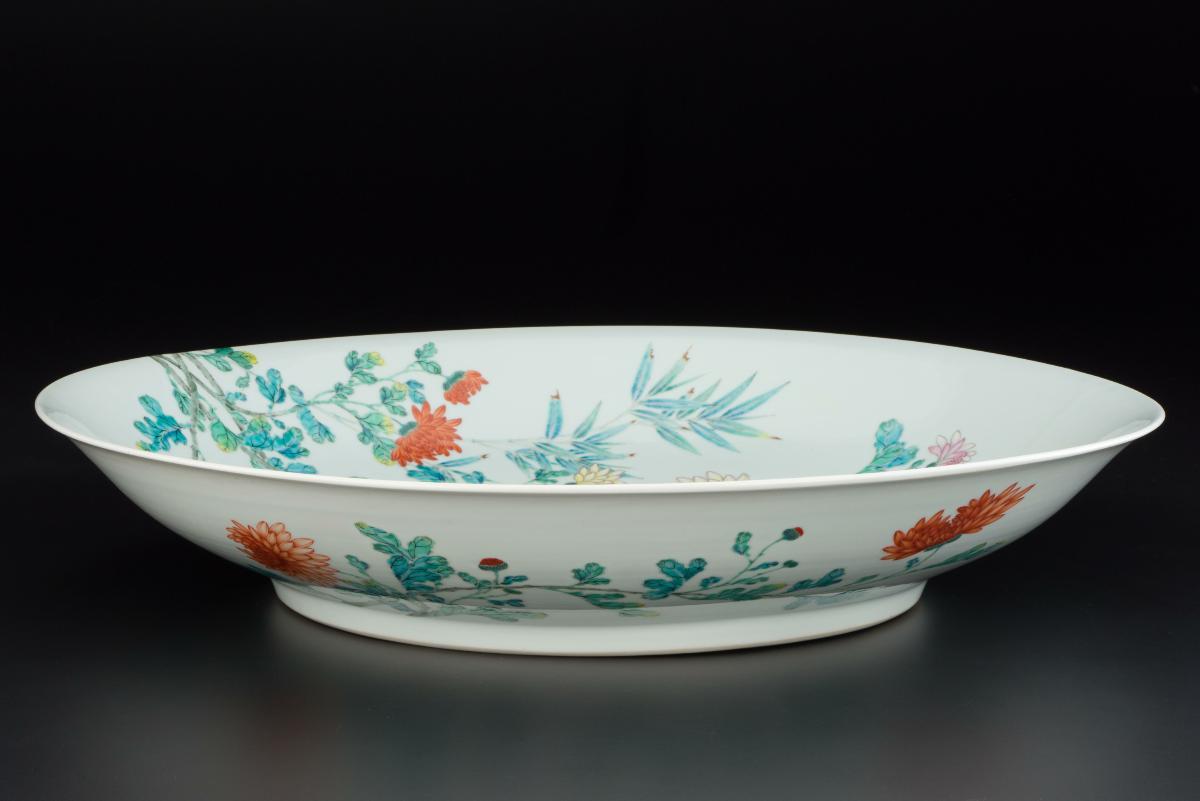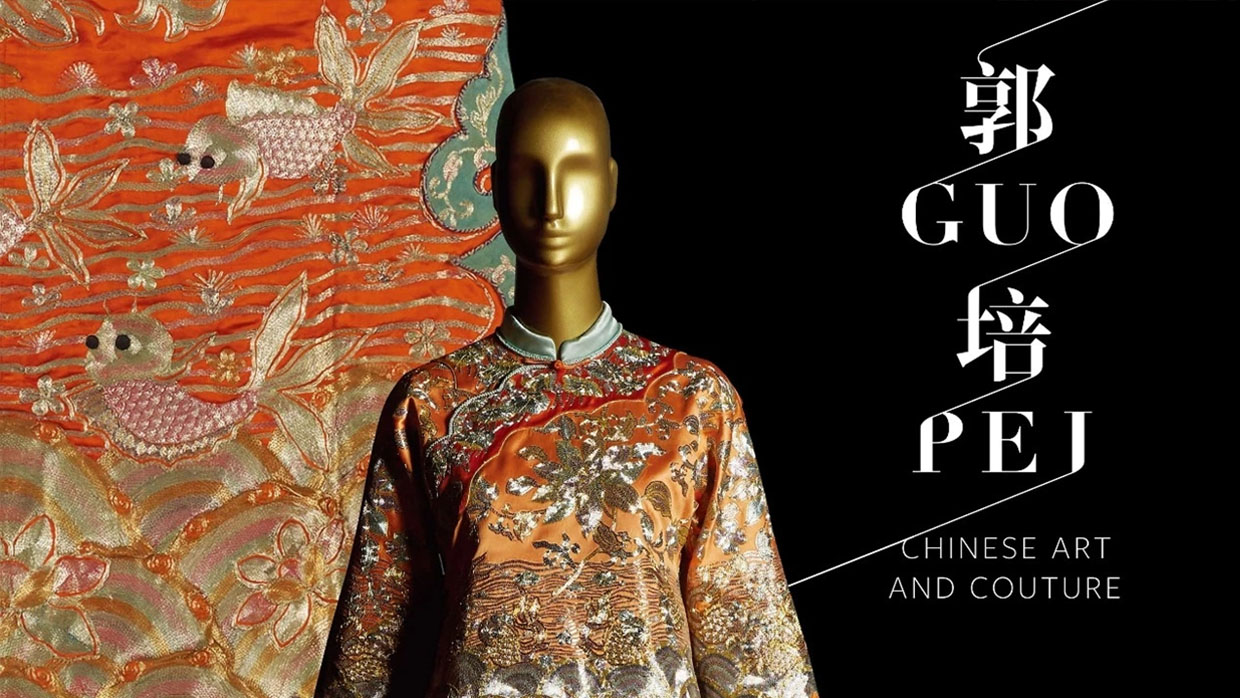Decorated in famille rose, or fencai 粉彩 (literally, ‘pink colour’), this large dish derives its name from the pink enamel. A translucent pink, made from dispersing crushed ruby in a clear enamel base, is mixed with opaque white enamel to achieve an opaque pink enamel. Opaque enamels – white and yellow, were also used to paint this tranquil scene of nature. These new enamels possibly developed from the Chinese cloissoné enamel tradition. However, by the time the Chinese started using the pink enamel, Western glassmakers were already using it in Europe, so the European tradition was also a source of inspiration. The central motif on this dish is the chrysanthemum, which embodies one of the four noble qualities of a gentleman. The chrysanthemum is a hardy plant which can withstand the winter cold, and is therefore representative of strength and integrity.


















